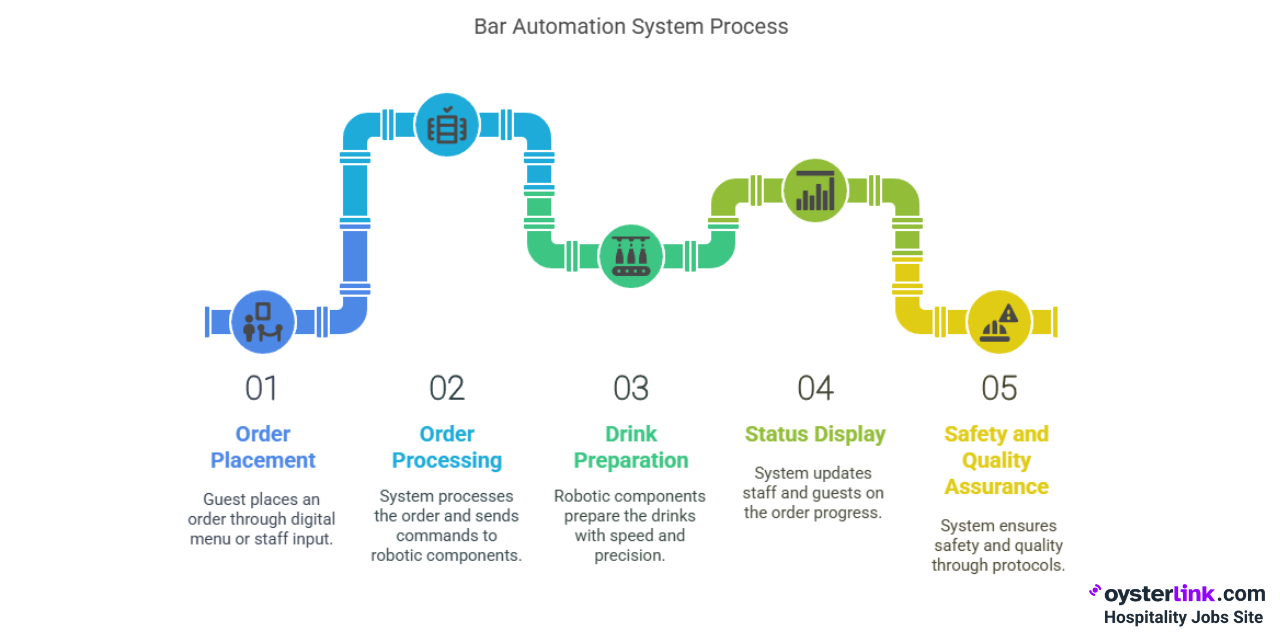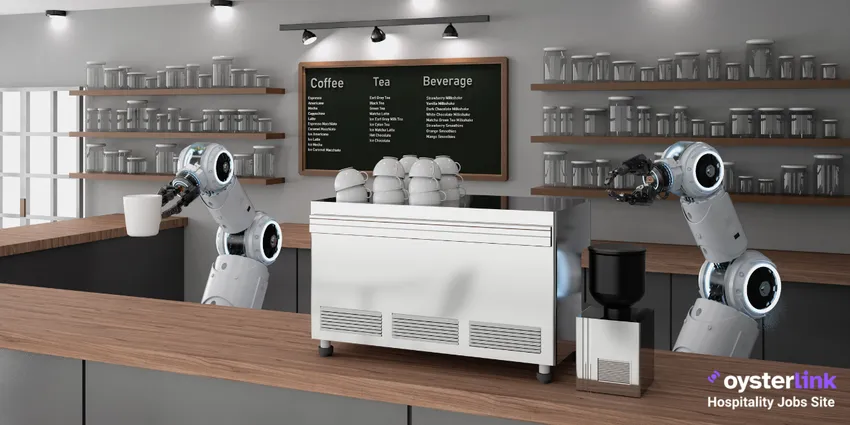Bar Automation Systems: Key Takeaways
- Bar automation systems use robotics and modern software to make drink prep quicker and more consistent, improving efficiency behind the bar.
- The benefits of implementing bar automation systems include reducing wait times, lowering labor costs and enhancing the guest experience through personalized orders and contactless service options.
- The initial setup costs typically start around $50,000 and can be higher for larger venues. It's important to carefully evaluate your ROI and the level of vendor support you'll need before making a decision.
- Automation is designed to complement — and not replace — the skills of experienced Bartenders.
If you've ever dealt with long lines and last-minute staff shortages or struggled to keep every Negroni tasting consistent, you know how challenging bar management can be.
With the demand for fast, reliable service growing, bar automation systems are becoming a game-changer — helping venues keep guests happy while easing staffing and quality worries.
This guide will cover the basics of bar automation systems, how they work day-to-day and their key benefits and challenges.
What Are Bar Automation Systems?
Bar automation systems rely on tech-powered setups that automate and streamline key points of drink making and service in hospitality venues.
They integrate robotics, digital interfaces and smart management tools to ensure faster, more consistent and efficient operations behind the bar.
Bar automation systems tend to be most popular in larger city venues, but brands are rolling out smaller, modular options too.
With the latest leaps in robotics, artificial intelligence and cloud software, you can keep tabs on usage, check stock quickly or update menus from your laptop.
Overall, bar automation transforms the traditional workflow into a highly coordinated, efficient process that increases throughput, maintains consistency and allows staff to focus on delivering exceptional hospitality.
How Do Bar Automation Systems Work?
Bar automation platforms integrate mechanical components — such as robotic arms, automated pourers and precision dispensers — with sophisticated digital systems that streamline the entire process.
These digital systems manage incoming orders, synchronize seamlessly with your POS (point of sale system) to ensure accurate billing and customer data and monitor inventory levels in real time to prevent shortages.
When a guest places an order — whether through a digital menu, a tablet or a staff input — the system immediately processes it, sending commands to the robotic components to prepare the drinks with speed and precision.
Many systems feature a status display that updates both staff and guests on the progress, for example, “Your Espresso Martini is being made — please wait at Pickup Station 3.”
This transparency enhances the guest experience by providing clear expectations.
The system often includes safety features, recipe control and quality assurance protocols, ensuring each drink is made accurately and consistently according to specified recipes.
Additionally, some platforms offer remote monitoring and troubleshooting capabilities, allowing Managers to oversee operations and address issues quickly.

Core components of bar automation
Bar automation systems rely on several key components working together to streamline drink preparation and service.
The main parts include:
- Robotic dispensers: Control pouring and mixing of spirits, mixers and syrups. While some have menu presets, more advanced ones allow recipe adjustments or overrides for custom drinks.
- Digital menus and ordering tablets: Enable guests to browse, customize and submit orders via tablets or smartphones — helpful when busy or short-staffed.
- Sensors: Monitor bottle use, track pours, flag waste, support inventory control and reduce shrinkage.
- Connectivity modules: Provide POS/payment integration and remote troubleshooting support from vendors or off-site managers.
Benefits of Bar Automation Systems
Implementing automation can bring a wide range of advantages that not only boost your bar’s efficiency but also enhance the overall guest experience.
These benefits include:
- Increased speed and efficiency: During busy times, automation handles measuring and pouring, speeding up service and reducing wait times.
- Labor optimization and cost savings: Routine tasks are automated, allowing staff to focus on customer service or signature cocktails. Many report less burnout and overtime costs.
- Enhanced customer experience: Fewer errors, accurate recipes and contactless ordering boost satisfaction.
- Improved inventory management: Real-time logs reduce waste, highlight theft or overpour and support smarter ordering decisions
Challenges of Bar Automation Systems
While bar automation offers many advantages, it also requires careful planning and investment. Consider the following:
- High costs: Bar automation systems can be expensive to purchase, install and maintain. Request detailed pricing and real-world examples from vendors, and consider starting with small pilots to evaluate ROI (return on investment) before full deployment.
- Integration with existing systems: Compatibility issues may arise when connecting automation platforms with current POS, inventory or scheduling systems. Proper testing and vendor support are crucial to avoid disruptions.
- Resistance to change: Some staff or guests might be hesitant toward new technology. Address concerns through education, demonstrations and emphasizing how automation enhances their experience rather than replaces their role.
- Reliability and downtime: Technical failures can disrupt service. Having contingency plans, backup procedures and reliable vendors helps mitigate potential operational hiccups.
- Space and infrastructure requirements: Modern systems may need dedicated space or specific wiring and network upgrades, which could be challenging in smaller or older venues.
- Regulatory and safety compliance: Ensure that automated systems meet local health, safety and alcohol service regulations to avoid legal issues.
How To Choose Your Bar Automation System
When selecting a bar automation system, consider the following steps:
- Assess your needs: Determine what features are most important for your venue — such as POS integration, inventory monitoring or customer interface options.
- Research available vendors: Popular options include Bartesian, PourMyDrink, BarTab, Ultimate Solution and BEYOND. Look into their product offerings, support services and industry reputation.
- Request demos and quotes: Contact multiple vendors to see live demonstrations, understand pricing structures, and ask about scalability and customization options.
- Read customer reviews: Check feedback from other hospitality operators to gauge reliability, ease of use, and post-sales support.
- Evaluate support and maintenance: Ensure the vendor offers reliable technical support, remote troubleshooting, and regular updates.
- Compare costs and contracts: Review upfront costs, ongoing fees, warranty coverage, and contract flexibility to ensure it fits within your budget.
By following these steps, you can confidently select a vendor that aligns with your venue’s goals and operations.
Once you have a system in place, the next step is optimizing your team’s performance. Oysterlink offers a wealth of hospitality resources tailored for bars and restaurants.
Whether you're aiming to refine salaries, improve daily operations or enhance your hiring process, you'll find valuable advice and practical tips.










Loading comments...